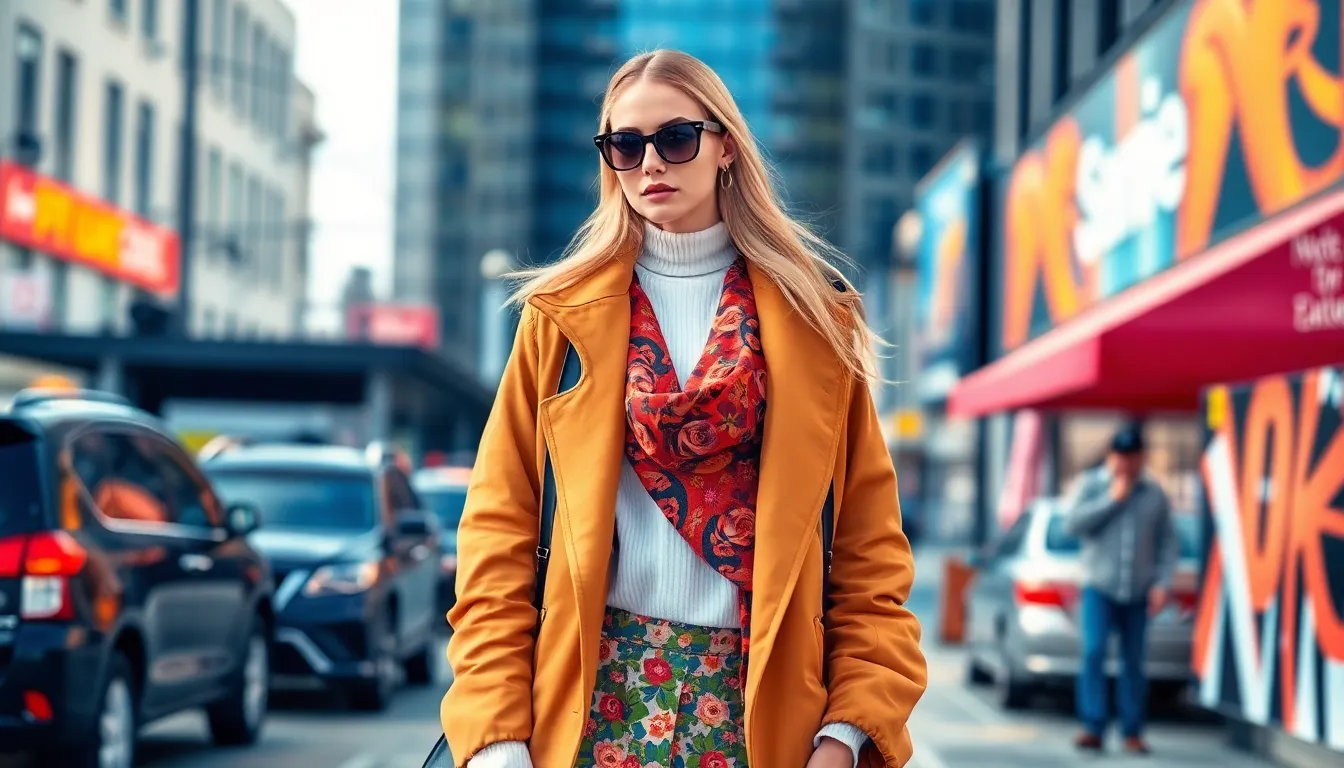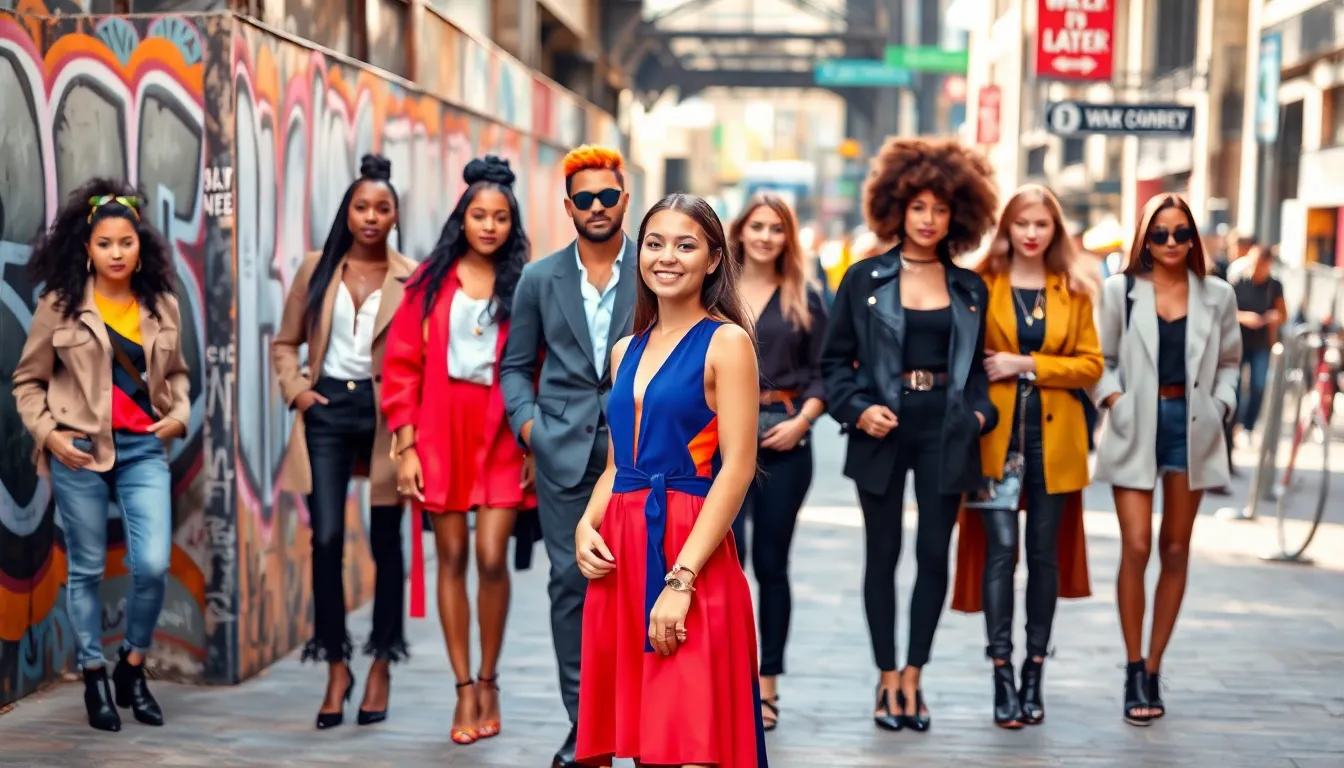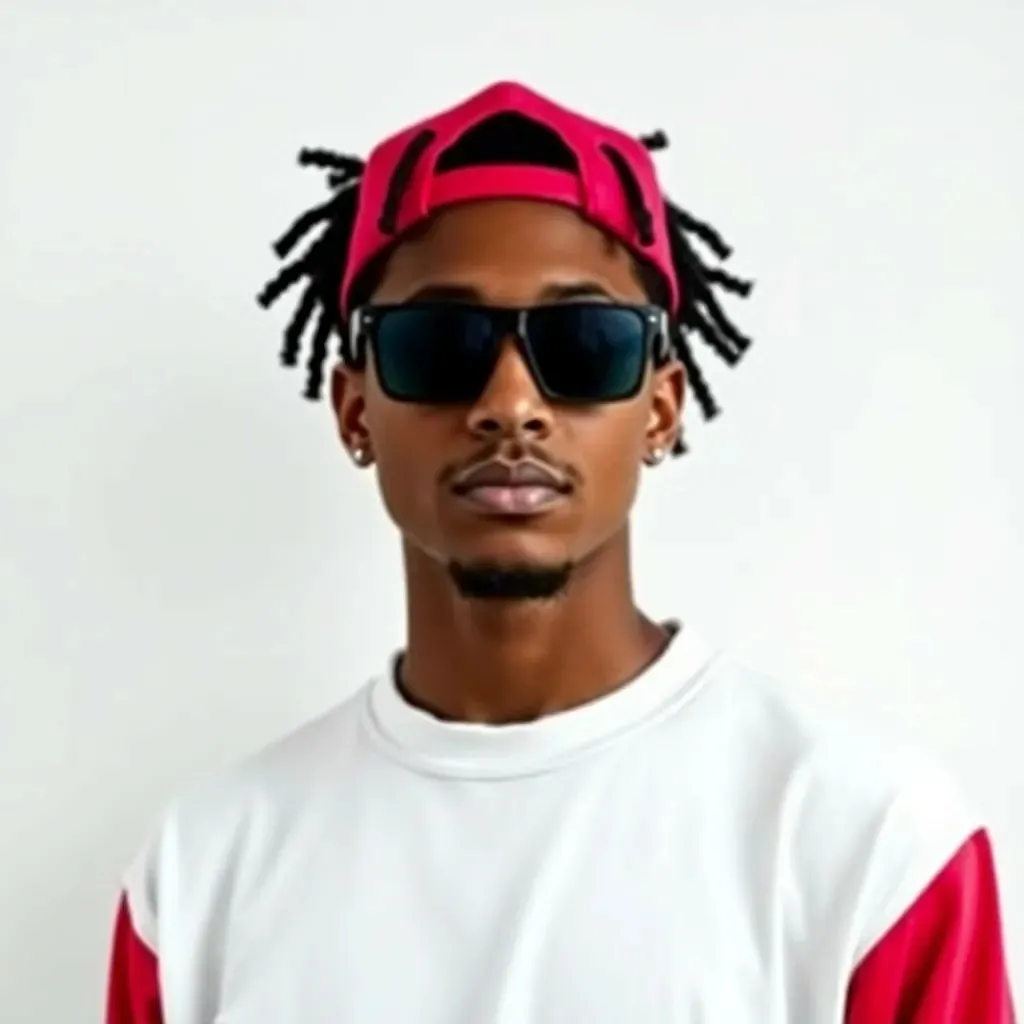Fashion editorial content isn’t just about pretty pictures and trendy outfits; it’s the heartbeat of the fashion world. It tells stories that go beyond fabric and stitching, capturing the essence of culture, identity, and creativity. When done right, it’s like a well-tailored suit—perfectly fitting and effortlessly stylish.
Table of Contents
ToggleUnderstanding Fashion Editorial Content
Fashion editorial content serves as a conduit for storytelling, connecting readers with diverse cultures and identities. This content embodies more than mere aesthetics, as it aims to convey messages and inspire emotional responses. Various elements within fashion editorials, like photography and styling, work together harmoniously to create a cohesive narrative.
Imagery plays a pivotal role, showcasing not just clothing but also the lifestyle associated with fashion. Bold visuals captivate audiences, immersing them in a specific ambiance or theme. Each photograph or layout reflects an intentional choice, illustrating the creative vision of designers and photographers.
Language enhances the visual components through well-crafted articles and captions. Storytelling intertwines with fashion, allowing brands to establish strong connections with their audiences. Ideas conveyed in editorial content often spark discussions, prompting readers to explore their styles and identities.
Targeted styles and emerging trends frequently permeate these pieces, keeping audiences informed about the latest developments in fashion. Readers gain insight into brand philosophies and cultural movements through thoughtful exploration of current issues. By placing content in a broader context, meaningful connections emerge, transforming fashion editorials into essential commentary on society.
Each fashion editorial acts as a reflection of contemporary society, revealing insights into consumer desires and aspirations. Professional editors and creatives craft these stories, ensuring that every detail aligns with the intended message. Fashion editorial content remains a vital component of the industry, defining not only trends but also cultural narratives that resonate with a diverse audience.
The Role of Fashion Editorial Content in Media

Fashion editorial content plays a crucial part in shaping media narratives. It bridges the gap between style and culture, crafting a dialogue that resonates with diverse audiences.
Types of Fashion Editorials
Fashion editorials fall into various categories. Editorial shoots often feature seasonal collections, focusing on the latest trends or specific themes. Lookbooks showcase a curated selection of outfits, highlighting individual pieces in coherent styles. Street style photography captures real-life fashion, emphasizing personal expression outside typical media formats. Each type serves a distinct purpose, catering to different audiences and contexts.
Key Elements of Successful Fashion Editorials
Successful fashion editorials incorporate several essential elements. Strong photography captures attention, drawing viewers into the visual narrative. Creative styling enhances the story, ensuring each look conveys a specific mood or theme. Thoughtful writing complements visuals, providing context that engages readers. Brand identity should remain evident, connecting products with cultural values. Together, these components create a cohesive message that resonates with the audience, amplifying the impact of the editorial.
Creating Compelling Fashion Editorial Content
Creating compelling fashion editorial content involves thorough research and innovative ideation. Understanding target audiences ensures that the content resonates fundamentally. Identifying current trends helps in curating relevant themes. Utilizing social media platforms can yield fresh insights that inspire new concepts. Collaborating with designers and influencers adds unique perspectives to the editorial narrative. Generating a mood board consolidates ideas visually, guiding the creative process effectively.
Research and Ideation
Effective research forms the backbone of any fashion editorial. Analyzing consumer behavior aids brands in understanding what captivates their audience. Exploring cultural movements fosters a connection between fashion and societal shifts. Identifying key influencers allows brands to align themselves with trendsetters. Incorporating demographic data strengthens the focus on specific market segments. Emphasizing seasonal trends aligns the content with consumer interests and desires. Striking the right balance between creativity and market relevance propels editorials to greater heights.
Visual Storytelling Techniques
Visual storytelling techniques invite readers into compelling narratives. Strong photography captures attention immediately. Utilizing diverse models reflects inclusivity within the fashion industry. Incorporating dynamic composition enhances the overall visual impact. Emphasizing bold colors can evoke specific emotions tied to the fashion being showcased. Consistency in styling ensures a unified look throughout the editorial. Integrating text with visuals provides context, deepening the audience’s engagement with each image. Ultimately, these techniques work together to create an engaging fashion editorial that resonates powerfully with viewers.
The Impact of Digital Platforms on Fashion Editorials
Digital platforms revolutionize fashion editorials by broadening accessibility and reach. Social media channels like Instagram and Pinterest amplify visual storytelling, making it easier for brands to connect with global audiences. Engagement rates soar due to instant feedback and interaction with consumers.
Websites and online magazines serve as hubs for editorial content, offering a platform for storytelling that traditional media cannot match. High-quality visuals paired with optimized written content enhance user experience, encouraging deeper engagement.
Video content also plays a pivotal role, transforming static images into dynamic narratives. Platforms like TikTok and YouTube enable brands to showcase fashion in action, capturing movements and emotions that photography may miss.
In addition, user-generated content fosters community involvement, allowing consumers to participate in brand narratives. By sharing personal style and experiences, audiences create an authentic connection with brands, elevating the overall impact of fashion editorials.
Analytics tools on digital platforms provide valuable insights into audience preferences and behaviors. Brands leverage this data to tailor content strategically, ensuring alignment with consumer interests and trends.
The immediacy of digital publishing allows for real-time coverage of fashion events and trends, keeping editorial content fresh and relevant. Innovative formats, such as shoppable articles, enhance user convenience, blending commerce with editorial impact.
Ultimately, digital platforms reshape the landscape of fashion editorials, fostering collaboration and experimentation. This evolution not only heightens visibility but also strengthens the intrinsic connection between fashion and culture, creating rich narratives that resonate with diverse audiences.
Fashion editorial content plays a pivotal role in shaping the industry by weaving together narratives that resonate with audiences. It’s not just about showcasing clothing; it’s about telling stories that reflect culture and identity. Through strong visuals and thoughtful writing, editorials create connections that inspire and inform.
As digital platforms evolve, the reach and accessibility of fashion editorials expand, inviting global engagement. This transformation allows brands to interact with consumers in meaningful ways, fostering community and collaboration.
Ultimately, fashion editorials are more than mere marketing tools; they serve as vital cultural commentaries that influence trends and reflect contemporary society. Their impact is undeniable, making them essential for anyone interested in the intersection of fashion and culture.


